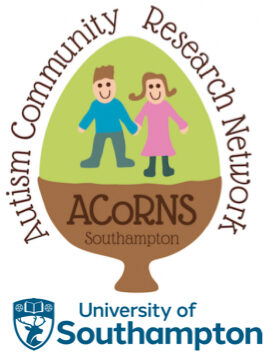‘I am’ Digital Stories is an inclusive, strengths-based method for enabling the voices of children and young people, especially those with Special Educational Needs and Disabilities (SEND), to be shared within their transitions. This method uses digital filmmaking processes to create a short (3-5 minute) video with the child or young person so that they can contribute their perspectives to transition planning.
This approach uses a strengths-based framework to guide children, and those who support them, through the process of creating their own story, and helping them to present their ‘best self’ to other people so that they have autonomy over what information is shared.
What is the ‘I am’ Digital Story method?
Our approach to creating an ‘I am’ Digital Story was co-created with educational and related professionals, and autistic children and young people through in-depth, qualitative research. We wanted to challenge the deficit-focused narratives that often follow children through school and fail to include their different ways of knowing and communicating about the world.
Creating ‘I am’ Digital Stories will enable you to:
The ‘I am’ Digital Story approach can be embedded in curriculum, person-centred, and transition planning as well as within assessment processes such as those carried out by Educational Psychologists and Speech and Language Therapists. ‘I am’ Digital Stories can also be used within formal review processes such as those for Education, Health and Care Plans (EHCPs).
- Provide a holistic, strengths-based representation of a child through enabling them to contribute their perspectives to transition planning
- Promote pupil voice and presence within your setting
- Keep the child at the centre of thinking and discussions
- Use the insights gained as an adjunct to other information (formal reports etc.)
- Support the sharing of knowledge and insights about the child in a way that includes them
This approach can be used flexibly and in any setting that supports children and young people of any age. It has been used for:
- Young (4-year-old) autistic children making the transition from early years education to primary school
- Young adults with complex communication needs and learning disabilities making the transition from special school to adult services
- Children with a range of physical and / or learning disabilities making the transition from Primary to Secondary School
- Autistic young people at mainstream secondary school exploring ‘everyday’ transitions at school e.g. between home and school and between classes
- Families with autistic children to introduce themselves to healthcare professionals
Our co-created approach has evolved through working with different children, families and professionals in different contexts. This means that the method has been designed with busy practitioners and families in mind so that it can be embedded within everyday activities. Our peer-reviewed published research reports on the development of the method as well as positive evaluations from different stakeholders who have created or viewed ‘I am’ Digital Stories in practice.). This website has links to many of our publications illustrating how the PBA has been used.
This website has links to our publications illustrating how ‘I am’ Digital Stories have been applied and evaluated. Our approach, and the evidence base, continues to evolve as we, and other practitioners and researchers, identify new, different and better ways of implementing the method. We would love to hear your experiences of using ‘I am’ Digital Stories in research and practice.
‘I Am’ Digital Stories show who the children are and the things they like doing. Click below to watch Oscar and Oliver's 'I Am' Digital Stories. The stories include footage Wearcams, which reveals the children’s perspectives on their everyday activities at nursery as well as their fascinating self-talk.
Find out more using the menu at the top of the page
- FREE short online tutorials on how you can apply the ‘I am’ Digital Story approach within your setting.
- FREE downloadable resources to support you in creating ‘I am’ Digital Stories (e.g. top tips on planning and filming an ‘I am’ Digital Story).

